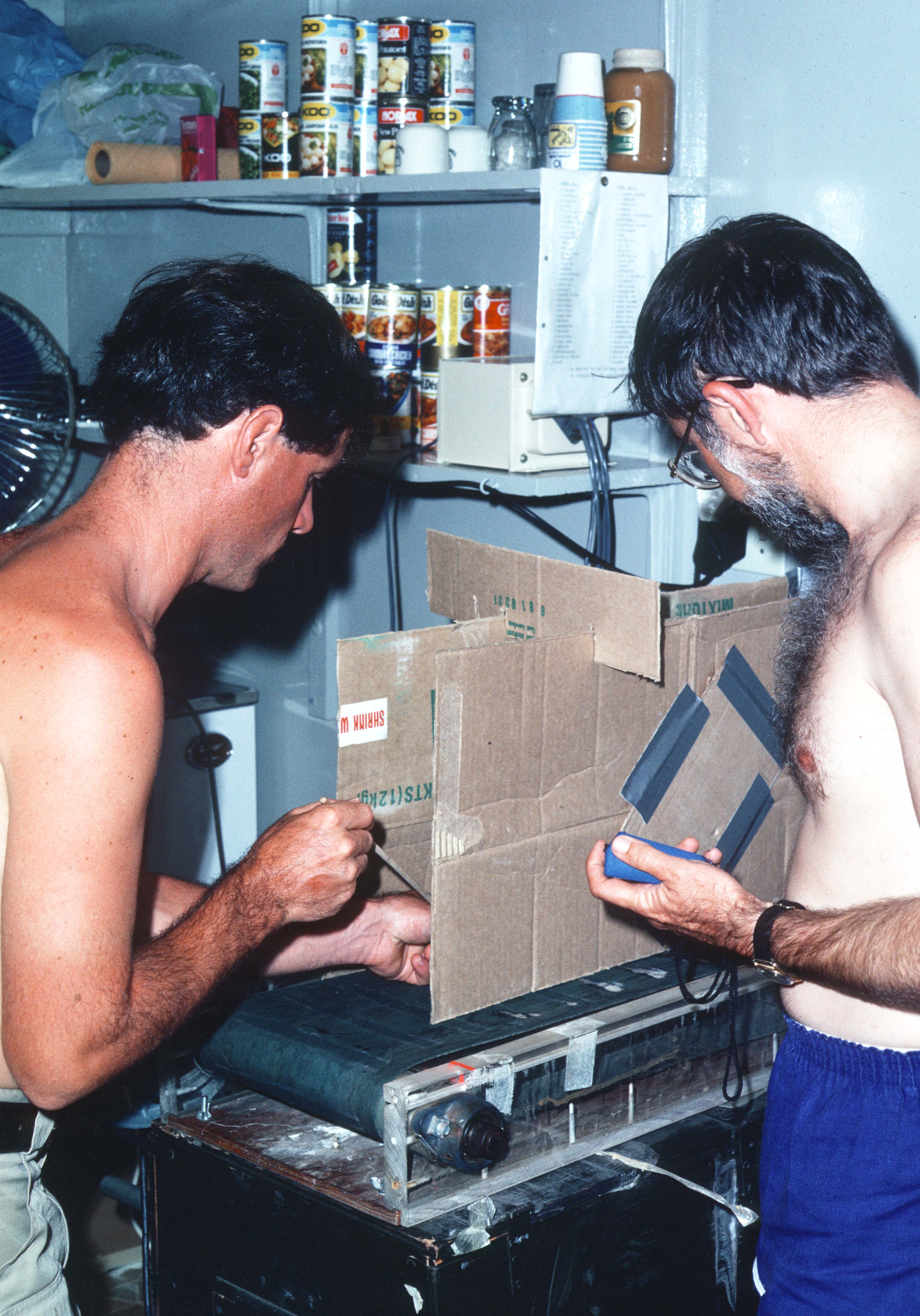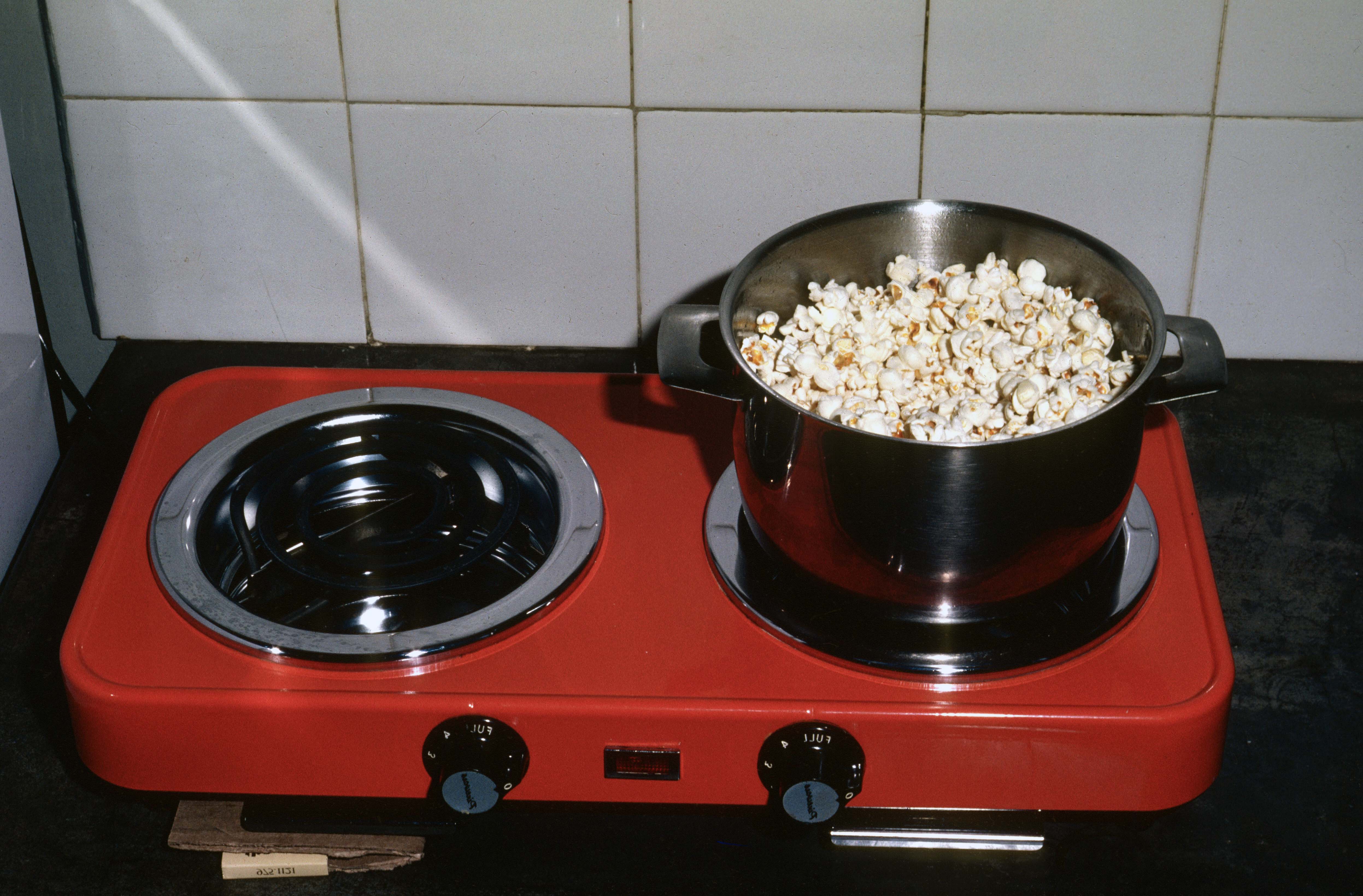48 Lab work in the field
Experimental work in the laboratory is often easy. One has control temperature and lighting, backup equipment is often handy if something breaks down, and one can usually sleep in one’s own bed.
Experimental work in a field “laboratory” is different. Temperature control (critical for studies with ectotherms) is always challenging. When I was working with Art Dunham and Karen Overall with lizards in Big Bend, we were lucky that the research building we used (‘Quinta Barker’) had thick adobe walls and held a temperature of about 34 °C (93 F°) throughout the day – conveniently, this was the preferred temperature for Sceloporus merriami, our study lizard.
On the 1981 trip to the Kalahari, Al Bennett, Ken Nagy, Henry John-Alder, and I had to use the tiny kitchen of our cottage as an environmental chamber. Our goal was to compare the acceleration, sprint speed, and stamina of widely foraging versus sit-and-wait lizards.
To measure stamina, we put lizards on the moving belt of a treadmill and measured time until exhaustion. However, the ‘natural’ temperature of this kitchen was below the preferred temperatures of the lacertid lizards we were studying, so we had find a way to raise the room temperature.
The kitchen had a two-burner electric stove. Early in the morning, we’d close the doors to the kitchen and turn on the burners. Within an hour or two the room reached 35-37 °C, which was perfect for these lizards. [We used a fan to minimize thermal gradients in the kitchen.]
This worked well enough; however, the conditions for us were decidedly uncomfortable. Imagine a small kitchen, nearly filled with four grown men and a heating unit. Yes, the kitchen became appropriately warm but was suffused with sweat and humidity. After a day in this ‘lab,’ we considered hunting for lizards in the field a cakewalk.

When we had to heat the room by turning on the heaters, we soon relized that we could simultaneously make popcorn. Multitasking! A good time was had by all.
 (width=“70%”)
(width=“70%”)
To measure sprint speed, we needed to warm the lizards, but not the kitchen. We adapted a method developed by George Bartholomew. We’d put individual lizards in cloth (holding) bags and suspend them in a big cardboard box, which was heated by a hairdryer! An electronic temperature controller would periodically turn on the hairdryer, heating the lizards to the desired temperature.